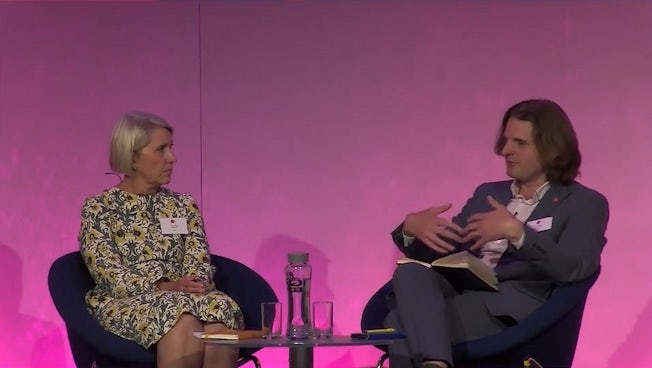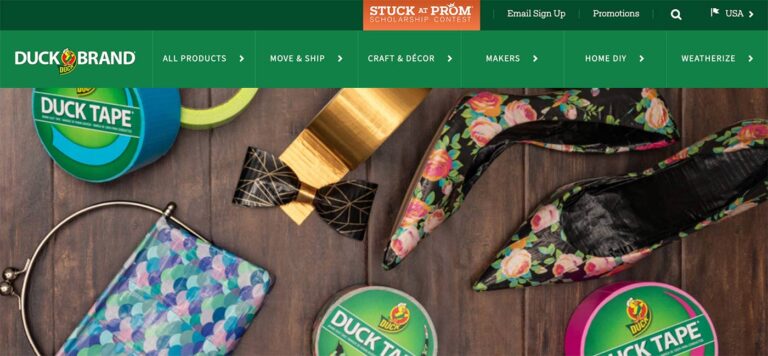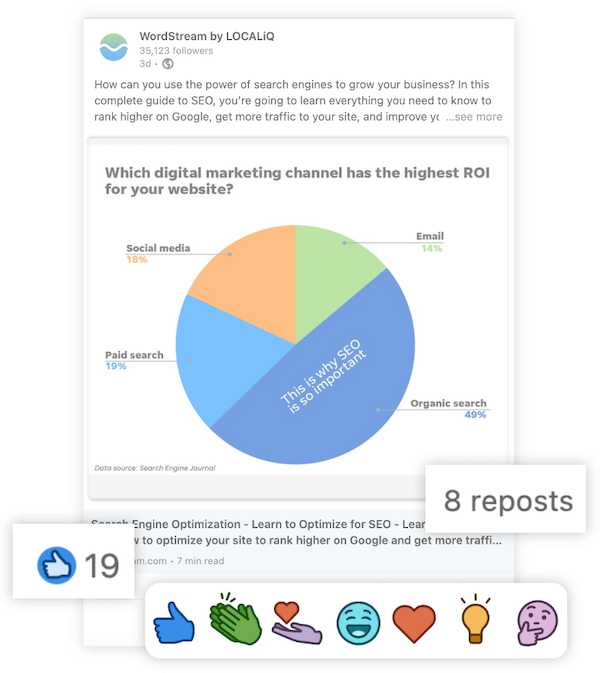“At that point in time, that was the only time we contacted them,” said Christison. “We sent them letters – and letters work really well for us – but we recognised that we wanted to build a relationship with our customers in between those eye test appointments – what we call our ‘recall cycle’. That was the starting point for what we wanted to do.”
“That is the pivot point around which everything revolves,” said Christison. “We almost have a duty of care to remind somebody to come back for their eye test. […] That’s the mainstay of what we’re trying to do; and our communications are focused around that, because we as a marketing function are supporting our partners by driving footfall into our business, and [also] making sure that our customers are aware of the importance of that test.”
“We gave the project a name, we even had a theme tune – and we extended the participation across a broader group,” said Christison. “We invited people from our regions, from technology, from data, from HR, from our legal team – [they] were all involved, as well as the participants from our CRM team.”
“We did a huge amount of analytics work to understand our customer personas; we brought all the research we’d ever done into the fold; we undertook store visits; we talked to partners and the heads of our business to really understand what were the key priorities in place – and from a customer perspective, where were the opportunities to have a meaningful conversation with our customers to address the needs and wants they had from us as an organisation?”

Building relationships with customers between checkups
As a company that offers both eye tests and hearing tests as well as products that aid vision and hearing like glasses, contact lenses and hearing aids, Specsavers has a unique challenge when it comes to the customer experience. It has regular, predetermined points of contact with the customer – such as an eye test every two years – but how can it remain front of mind in the interval, and ensure that the customer comes back? And what else can the brand do to make sure that the customer experience is as seamless as possible?
After their appointment, if they keep it, customers move into a post-purchase booking journey: for those who didn’t buy a product, there’s a non-purchaser journey, while those who did will receive checks to make sure they’re happy with their purchase. “All of those communications reflect our tone of voice, which is warm, knowledgeable and down-to-earth,” said Christison. “It’s not transactional – it very much reflects the Specsavers brand.” Between one appointment and the next – the recommended frequency of eye tests for most adults is every two years, regardless of whether or not they already wear glasses or contact lenses – customers receive newsletters, with content tailored based on what Specsavers knows about them and their preferences.
“We do have subscription in some areas of our business, because you can buy our contact lenses on subscription,” Christison said. “That’s a really important part of our business – to encourage our customers, where it’s appropriate, to sign up for our contact lens subscription.” Outside of dedicated subscription products, however, the focal point of Specsavers’ contact strategy is ensuring that customers come back in for their regular eye appointment.
Prior to beginning its customer transformation six years ago, Specsavers had a single point of contact with its customers: reminding them that they were due for an eye test.
This work yielded a “really, really long list” of things that Specsavers could be doing, some of which were easy, while others required more investment in data and technology – something that Specsavers made a point of maintaining as it moved forward with the list. “We were always cognisant that the technology and data stuff was really important – so we had to run those in parallel,” said Christison. Actions from the list were prioritised by ease of delivery and value to the customer.
This led to developments such as beginning to use email and SMS to communicate with customers – email was a particularly under-explored channel for Specsavers. The brand also focused on optimising the customer journey around booking appointments, by introducing online booking, providing more information about what the appointment would involve and how to prepare, and building in more flexibility with changes and cancellation. “We talk about ‘chair time’, and making sure that we have full ‘chair time’,” said Christison – in other words, minimising the number of late or cancelled appointments – “so we want to make sure that if you can’t make it for whatever reason, that we give you the opportunity to let us know – and give consumers the opportunity to rebook.”
“One of the key ingredients has been [that we’re] always about doing the right thing for the customer,” said Christison. “We want to make sure that our customers have the opportunity to make the right decisions about the products and services that we offer to them.
With competition growing and an increasing pace of change in the market, Specsavers recognised that keeping in contact with the customer was the key to building loyalty and encouraging repeat store visits. This kicked off an extensive research and reflection exercise in which Specsavers sought to better understand its customers, where the opportunities lay, and also what its partners needed.
Being crystal clear about what they were setting out to achieve, and what success would look like, was another important factor, and helped to get the whole organisation on board with contributing to that goal. “We had a clear goal of what we wanted to achieve in terms of incremental revenue,” said Christison. “A bit like the Blue Peter-style Totaliser” – the infamous ‘fundraising thermometer’ that Blue Peter would use to track progress towards a charitable goal – “that was really motivating for everyone, and everyone felt like they wanted to add their contribution to the Totaliser. So that’s another thing that I think would be worthwhile doing – focus on a clear goal.”
Reflecting on Specsavers’ customer transformation so far, Christison outlined some of the lessons that she sees as key to successfully carrying out this type of project within an organisation. “I would start with … making sure you’ve got the project governance in place,” she said. “That really helped us – I was a bit cynical about the theme tune, but actually, it did help!”
Involving the whole organisation in change
Specsavers employees also have access to more data and technology to support them in carrying out their role; and the different regions of Specsavers’ business are now much more joined up and collaborative. “We’ve created a community globally which you can tap into and share your experiences,” said Christison. “The CRM team in Australia have got good things to share as well as our Northern European counterparts – so you’re part of a much bigger collaborative community that you can check in with and share amongst.”
Finally, Christison said, organisations need to be comfortable with the fact that sometimes the parameters of what they’re setting out to do will need to change – particularly when something as life-altering as the Covid-19 pandemic comes along, but there can be other reasons why it might make sense to shift your focus.
How has the transformation project changed the way that members of Specsavers’ CRM team – and indeed other teams as well – approach their work? “We’re now asking you to think much more about the customer,” said Christison. “The customer is at the heart of our thinking. Obviously, we’re always thinking about the business – but we’re thinking about the customer first.”
Six years ago, Specsavers set out to answer those questions and more – and two years ago, the onset of the Covid-19 pandemic further reshaped the way that the brand interacted with its customers, prompting additional change.
“We’ve been running for 35 years, and we do know our customers and the way that we operate really well,” she went on. “We just needed to use that [transformation] project to really surface them, and bring them to the fore.”
Moderator Steffan Aquarone asked Christison what the key ingredients have been to Specsavers’ transformation, outside of technology.
Beginning in August 2020, a greater structure was put around the project, with an initial six-month timeframe for achieving its goals. “We thought the pandemic was a little thing that might just pass us by,” Christison recalled. “But obviously, as we know, things continued way longer than that – and we had to change our direction in terms of what we were going to do.” The timeframe for the project was initially extended by another six months, then an additional year, and another year again after that. This wasn’t due to a lack of success, however, but rather because the company wanted to keep the project’s momentum going. “It feels like we don’t want to stop it – because people like being part of it,” said Christison. Becoming involved in the process of change has also helped Specsavers’ employees to feel much more comfortable with that change.
Early in 2020, just as the pandemic was beginning to take hold across the world, the CRM team received positive feedback about the transformation work they’d been carrying out, which had been expanded from the original market of the UK to other regions. The team began to look into how to accelerate and elevate the work they were doing, and determined that the best way was to create it as a “special project”.
At Econsultancy Live: CX 2022, Specsavers Group CRM and Analytics Director Tina Christison sat down with Econsultancy’s Steffan Aquarone to share how Specsavers’ approach to the customer has evolved, and how the entire company was brought on board with the transformation initiative.
Takeaways from transformation
“Sometimes life gets in the way, and you have to change,” said Christison. “We did have to pivot in terms of what we were going to do because of the pandemic, but actually, I think that’s not been a bad thing. We’ll go back to that other stuff at a time when the opportunity is right to do so.”
Another key part of embedding change within the organisation has been the provision of training opportunities (something that Specsavers has carried out in partnership with Econsultancy). “We’ve given people the knowledge and expertise to think about what they could be doing in the future, and how they can further develop themselves in the role that they’re doing,” said Christison.
A person might wear a pair of glasses or a hearing aid every day of their life, but when it comes to engaging with the brand behind that pair of glasses or that hearing aid, those interactions take place much less frequently.
A member of the audience asked about the approach that Specsavers takes to contact strategy as a business that is not quite a subscription business with its regular intervals of product delivery, but also not a one-off purchase business either.






